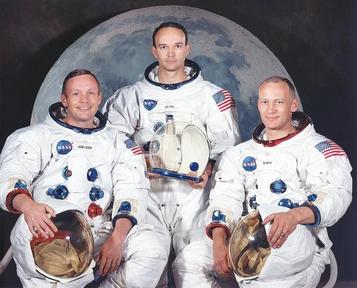
Neil A. Armstrong, Michael Collins and Edwin E. Aldrin Jr.
National Aeronautics and Space Administration - Apollo 11
On July 20, 1969, a human first set foot on another celestial body: Neil A. Armstrong took the "Small Step" into our greater future when he stepped off the Lunar Module, named "Eagle," onto the surface of the Moon.
He was shortly joined by "Buzz" Aldrin, and the two astronauts spent 21 hours on the lunar surface and returned around 20 kg of lunar rocks. After their historic walks on the Moon, they successfully docked with the Command Module "Columbia," in which Michael Collins was patiently orbiting the cold but no longer lifeless Moon.

Neil A. Armstrong, Michael Collins and Edwin E. Aldrin Jr.
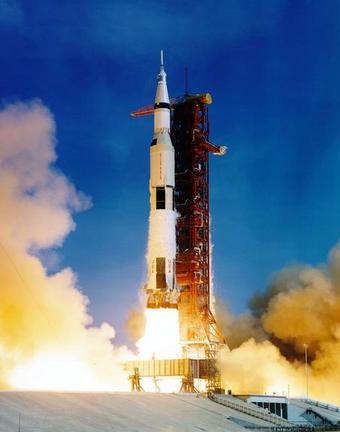
Apollo 11 Launch, 16th July 1969
 |
|
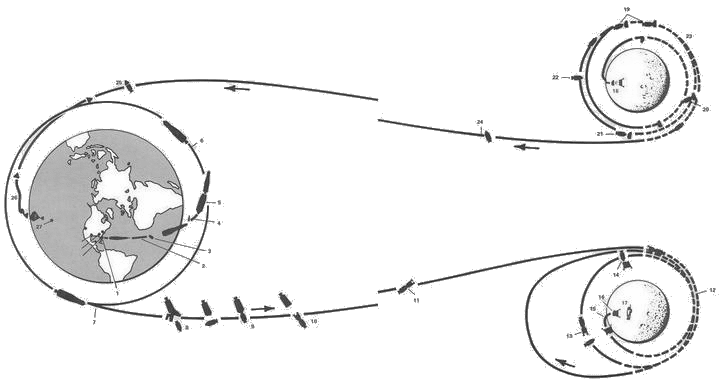

Earthrise
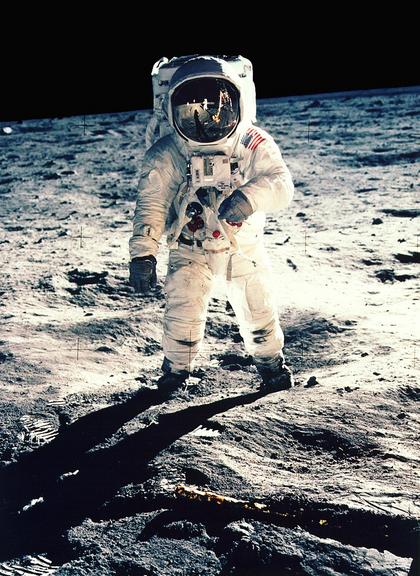
Aldrin
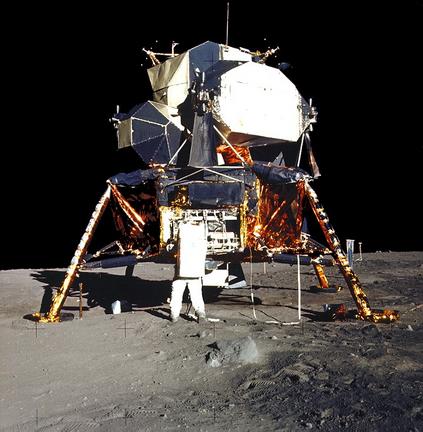
Lunar Module

Command Module splashdown, 24th July 1969
|
2004 |
|